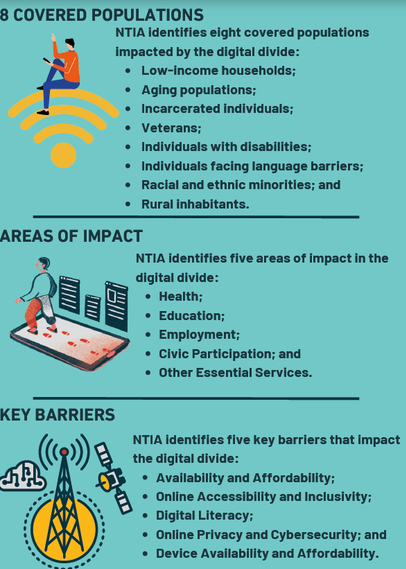Balancing Acts: My Journey Through Parenthood, Higher Ed, and Internet Inequality:
When I embarked on my journey to pursue a Master's degree, I was also navigating the demanding path of single parenthood. Raising my children and providing for them entirely on my own was a full-time commitment. Financial constraints meant that luxuries like a hot spot for internet access were out of reach.
My reality often involved doing homework in my car while my children attended their extracurricular activities. I relied heavily on the free Wi-Fi offered by businesses or the occasional random Wi-Fi spots from Xfinity. Living in New Mexico, where fast internet coverage isn't ubiquitous, added another layer of difficulty to my academic endeavors. These challenges significantly prolonged the time it took to complete assignments.
As a single parent, the budget for high-speed internet at home or on a hot spot simply didn't exist. This was before the COVID-19 pandemic, so there were no assistance programs available that could have eased this burden. Despite these obstacles, I persevered through unreliable internet sources and managed to complete my online Master's degree.
-Veronica Garibay
WHY DOES IT MATTER?
In today's interconnected world, digital technology is essential, yet millions face barriers to accessing the internet and digital tools, leading to a significant digital divide. This post explores digital equity and steps to ensure everyone can participate fully in the digital age. Digital equity means all individuals and communities have the IT capacity for full participation in society, democracy, and the economy. It includes the skills, knowledge, and resources to use technology effectively

The Importance of Digital Inclusion
Digital inclusion ensures all individuals and communities, especially the disadvantaged, have access to and use of ICTs. Key elements include:
- Affordable, robust broadband internet service.
- Internet-enabled devices that meet user needs.
- Access to digital literacy training.
- Quality technical support.
- Applications and online content that promote self-sufficiency, participation, and collaboration.
Challenges to Achieving Digital Equity
Barriers include:
- Economic: High costs of internet service and devices.
- Geographic: Lack of infrastructure in rural and remote areas.
- Educational: Lack of digital literacy and skills.
- Cultural: Language and cultural differences affecting content accessibility and usability.
Steps Towards Digital Equity
To bridge the digital divide, a multi-faceted approach is needed:
- Invest in Infrastructure: Build and maintain robust broadband infrastructure, especially in underserved areas.
- Promote Affordable Access: Use subsidies and affordable pricing models for low-income households.
- Enhance Digital Literacy: Provide training and resources to empower effective technology use.
- Support Community Initiatives: Community programs can promote digital inclusion and provide necessary support.
United States Census Bureau and National Telecommunications and Information Administration 2022 Map of Covered Population of all 50 States.

CC BY-SA 3.0

CC BY-SA 3.0
DIGITAL EQUITY LANDSCAPE IN NEW MEXICO
Information and Infographic taken from Connect New Mexico and the Census Bureau

Add comment
Comments